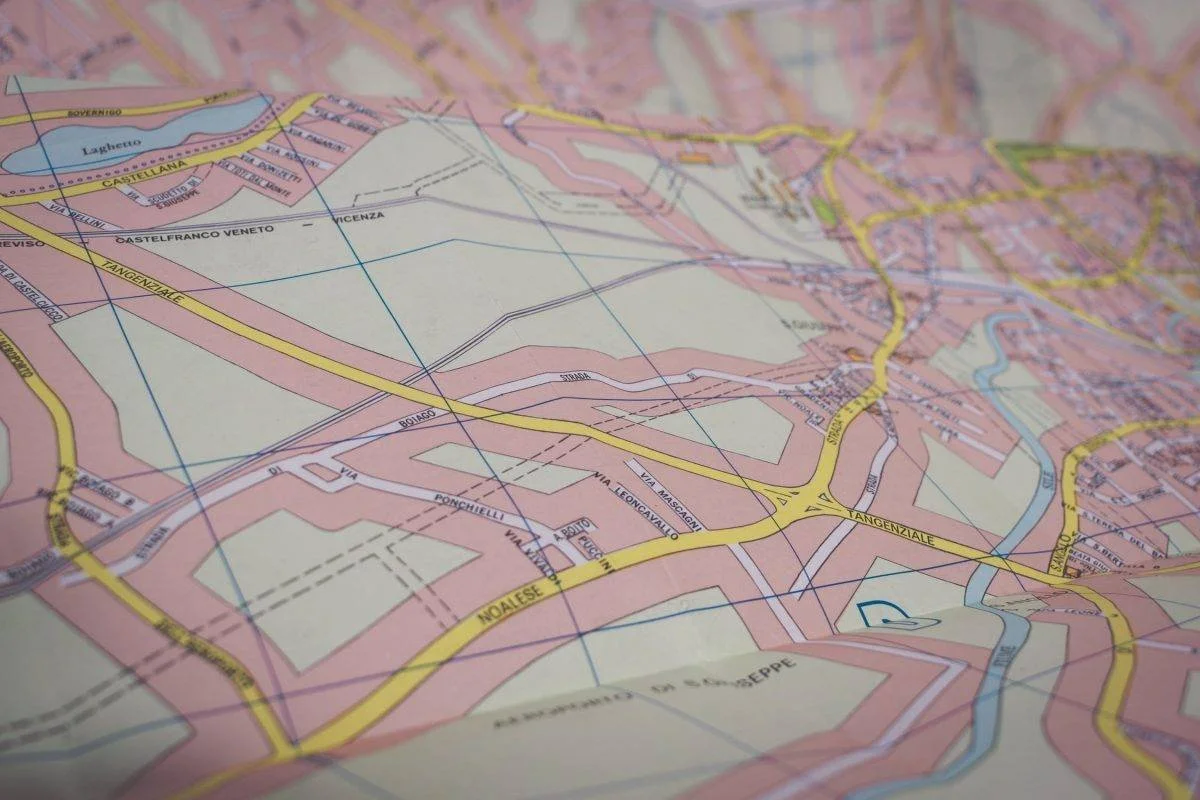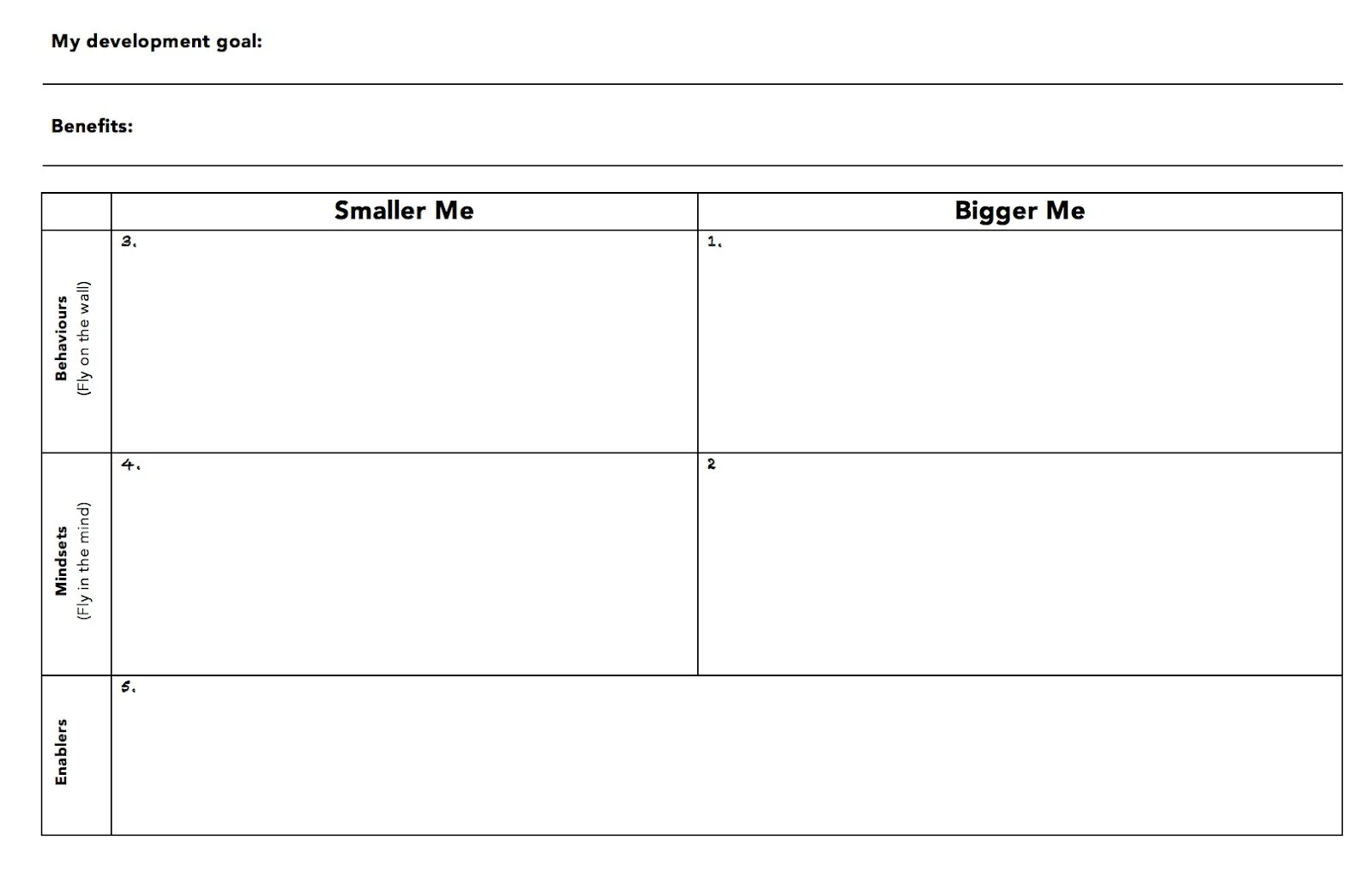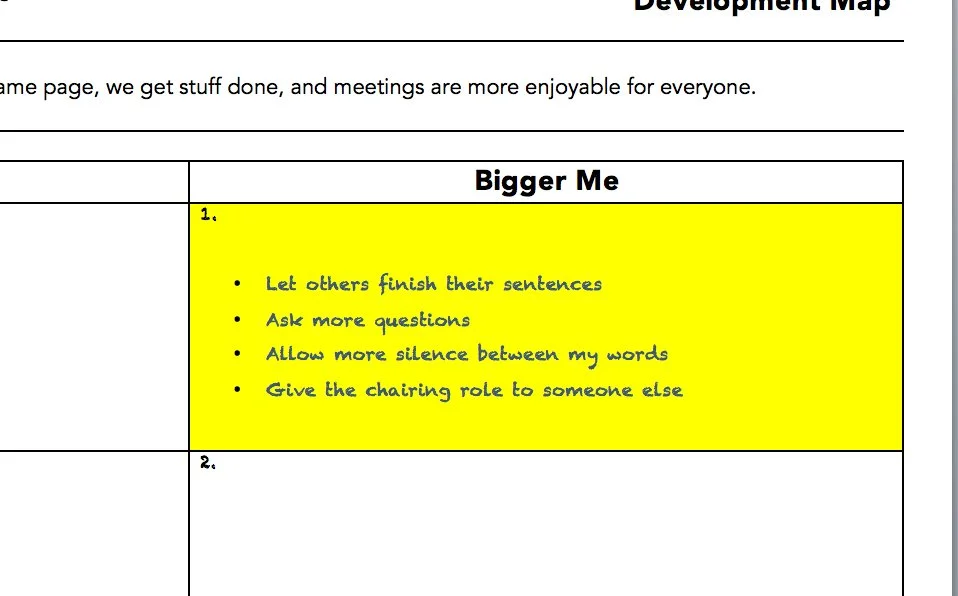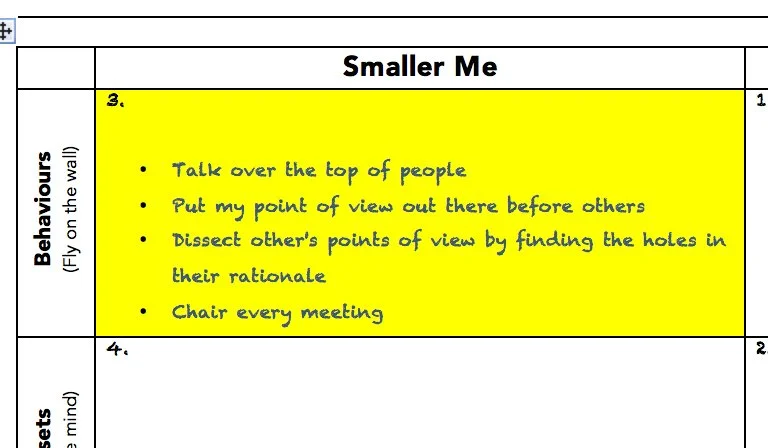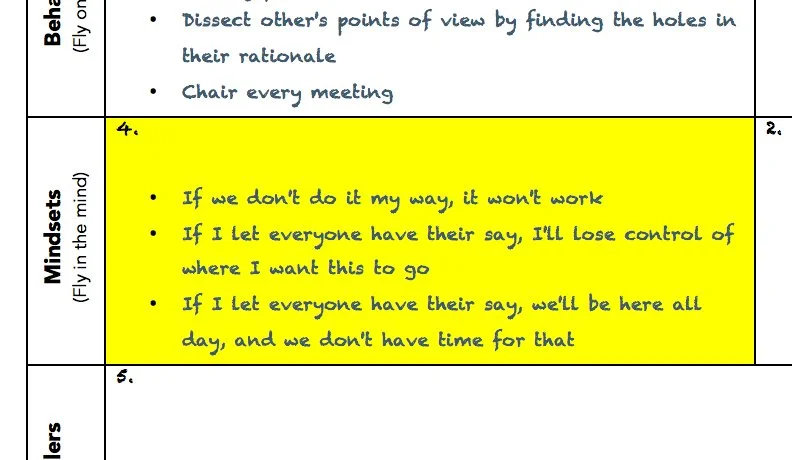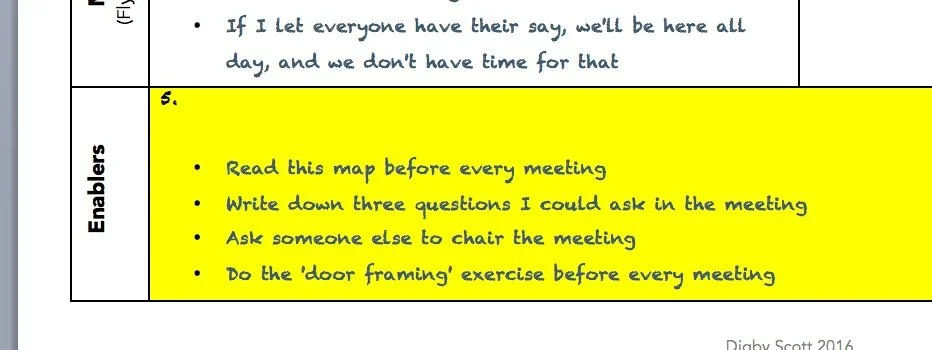Bigger Me
Most people find changing behaviours hard work. Our brain wiring is often set to drive a default pattern of behaviour, and unless we can get a good look at the wiring diagram, we’re going to be playing around in the dark.
Here’s a tool that my clients find really useful to help them change to become more of the person they want to be. If you’re trying to change, but are making less progress than you’d like, try this on for size. I call it the ‘Bigger Me’ tool.
Step 1:
Download and print off the bigger-me-template
It looks like this:
Step 2:
You’ll need some sort of development goal in mind. An idea of the sort of person you want to become. Maybe more influential. Maybe more patient with less competent people. Less dominating in meetings. More confident with senior management. Greater comfort with ambiguity. Pick something that’s important to you. At the top of the template, write down that goal, and the benefits of being that way.
Let’s use the example of ‘being less dominant in meetings’:
Step 3:
Thinking about your development goal, ask yourself this question:
“If I was operating this way all of the time, what would a ‘fly on the wall’ see me doing?”
In box 1, write down what you’d actually see yourself doing. Be specific. “If I was actually being less dominant, a fly on the wall would see me:
Letting others finish their sentences
Asking more questions
Allowing more silence between my words
Giving the chairing role to someone else.”
Write your own answers in box 1.
Boxes 1 and 2 represent the “bigger you”: the behaviours and mindsets that reflect the more ‘grown-up’ version of you.
Step 5:
Now complete the same steps for the left hand side. Start with box 3. The behaviours you want to let go of, or at least ‘dial down’. What would a fly-on-the-wall typically seeing you doing now? In the example, we could have:
Talking over the top of people
Putting my point of view out there before others
Dissecting other’s points of view by finding the holes in their rationale
Chairing every meeting
Step 6:
Now complete box 4: the mindset that drives your current behaviour. Example:
If we don’t do it my way, it won’t work
If I let everyone have their say, I’ll lose control of where I want this to go
If I let everyone have their say, we’ll be here all day, and we don’t have time for that
Boxes 3 and 4 represent the ‘smaller you’ – the behaviours and mindsets that represent your current way of operating. Once you’ve completed the first four boxes, you’ll probably be feeling some tension between the smaller you and the bigger you . That’s deliberate and part of the exercise – without discomfort, we don’t change. Sit with it.
Step 7:
Come up with at least three things that can help you get into the “right” frame of mind and embody the “right” behaviours (sorry, the pun was there for the taking!) Example:
Read this map before every meeting
Write down three questions I could ask in the meeting
Ask someone else to chair the meeting
Do the ‘door framing’ exercise before every meeting
And here’s your completed map:
Why does this work?
We’ve all heard the analogy of the iceberg: we only see 10% of what’s really going on (tip of the iceberg / the behaviour) and that the stuff under the waterline (our mindset) is 90% of the total picture. Our thinking drives our behaviour, so we need to map out our thinking, both current and desired, to change our behaviour.
The smaller me / bigger me tension is critical, as it provides the discomfort we all need to get us moving.
Writing down the benefits is another form of motivation to move towards the ‘bigger me’.
Tips for putting it into practice:
Print out your completed map and have it easily accessible. Ideally, keep it visible.
Give it to your coach, manager or a trusted colleague and ask them to hold you accountable
Do a different map for each behaviour you want to change.

